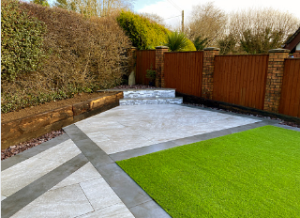Whether you’re looking for a solution for your tennis court or your front yard, there are some key things to consider before installing artificial grass. These include cost, durability, and weed resistance.
 Synthetic vs synthetic turf systems
Synthetic vs synthetic turf systems
Whether or not synthetic vs synthetic turf systems should be used depends on several factors. For example, how will synthetic turf compare to natural grass? It will also depend on the sports you’re playing on the field.
One of the major advantages of Termiturf artificial grass Adelaide is that it is much easier to maintain than natural grass. It also contributes to water conservation. In addition, with synthetic turf systems, there is no need for mowing or herbicides.
Compared to natural grass, synthetic turf is more forgiving for athlete injuries. However, there have been studies that suggest that synthetic turf may harbour more bacteria than natural grass. It is due to repeated abrasions and skin-to-skin contact.
Another advantage of synthetic turf is that it allows for a dynamic football game. It also provides a good playing surface and fair, competitive conditions for players worldwide. As a result, several international federations support using synthetic turf for football.
Unlike natural grass, synthetic turf is not able to filter rainwater. As a result, it can also contribute to a heat island effect when the surface of a synthetic turf field gets much warmer than the surrounding area. The heat island effect is caused by the manufactured surface absorbing heat from the atmosphere.
Moreover, synthetic turf does not absorb rainwater, which can contaminate water. Studies have shown that chemical contaminants from the rain filter directly into the stormwater system.
Another study by the Environmental Health and Human Performance Institute (EHHI) found that chemicals from spraying and misting contaminate water. It also found that rubber infill has 25 different chemical species.
Another study by Sprinturf found that infill containing a sand and rubber mixture had higher levels of bacteria than rubber alone.
Durability
Depending on the quality and the type of Termiturf artificial grass Adelaide you choose, the material’s lifespan could be anywhere from five years to twenty. However, if you’re looking to make the most of your investment, consider the following factors when choosing synthetic grass for your landscape.
The thickness of the monofilament fibres is a big factor in determining the material’s lifespan. While most artificial grass on the market is only 100 to 200 microns thick, some manufacturers produce thicker fibres.
The most durable type of artificial grass is the 3D Grass, designed to withstand the rigours of everyday use. In addition, its thick fibres make it more resistant to constant wear.
Another good indicator of the durability of artificial grass is its UV stabiliser. It helps prevent fading and discolouration of the material.
Weed resistance
Using artificial grass is a great way to improve your lawn’s aesthetics, and it is also a great way to avoid expensive chemical treatments. First, however, you’ll need to take steps to prevent weeds from growing.
Investing in a weed-resistant product is the best way to protect your turf. Unfortunately, the best weed-resistant products are not guaranteed to be weed free. It is because a weed-resistant product is only as good as the installation process used to install it. If the installer follows the right procedures, weeds may grow.
Another reason why weeds may still grow on your artificial turf is because of the infill material used. Some materials allow weeds to grow and germinate, making it easier for them to spread.
In addition to infill material, artificial grass may also be bordered by natural grass, allowing weeds to germinate. Fortunately, there are ways to avoid this.
Safety for children
Because artificial grass is more popular than ever, many parents wonder: Is artificial grass safe for children? After all, they want to protect their children from physical injuries and ensure their well-being. However, there is more to safety for children than just a few safety features.
Unlike natural grass, artificial grass is made from non-toxic synthetic materials. These include polyethylene fibres. These fibres are commonly used in bulletproof vests, plastic utensils and microwavable containers.
Artificial grass is also low maintenance. It is easy to clean and will look great all year round. It will not attract pests and will not leave stains. It will also dry quickly after rainfall.
Cost
Depending on the region and market, the cost of artificial grass can vary. However, most homeowners spend about $7.50 per square foot on average.
The cost of artificial grass can also depend on the type of grass chosen. The more natural-looking the grass, the more expensive it will be. Besides, the more traffic the turf receives, the higher the costs.
You can also spread mulch around your artificial lawn. It will help keep the turf looking fresh. Mulch can be bought at $20 to $25 per cubic yard.
There are also artificial grasses made from recycled materials. These grasses can be used in dog parks, playgrounds, and golf driving ranges.